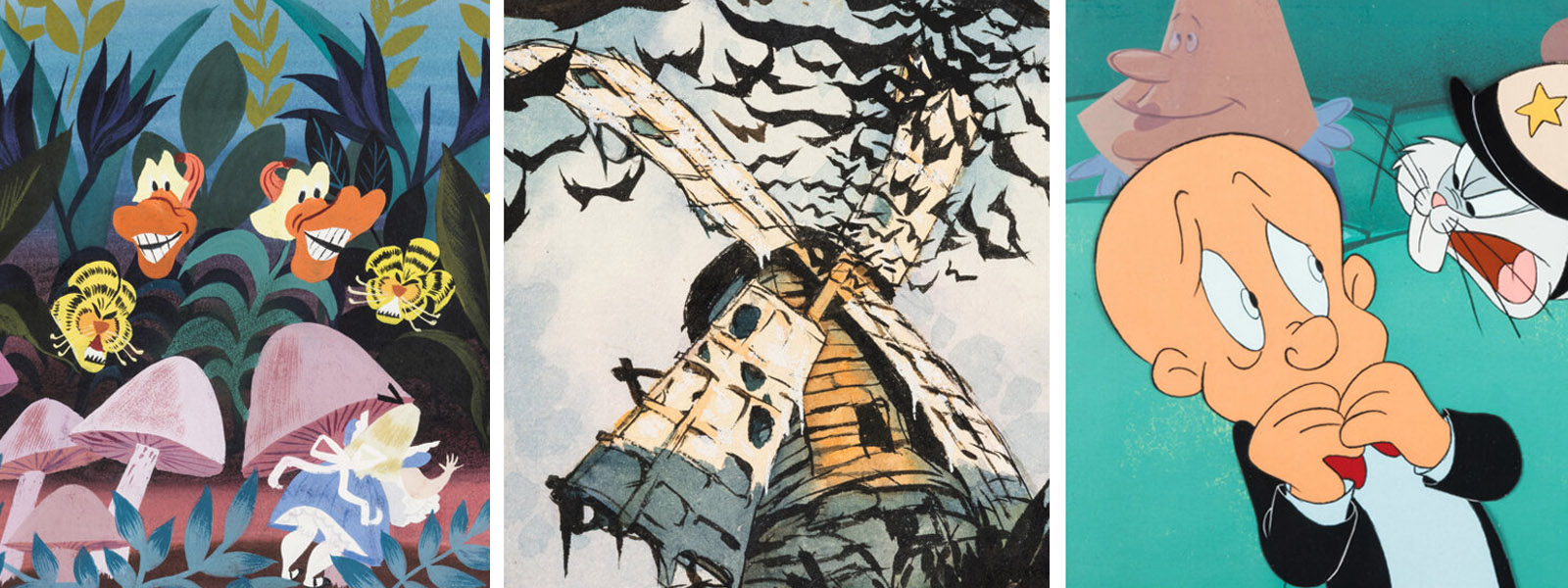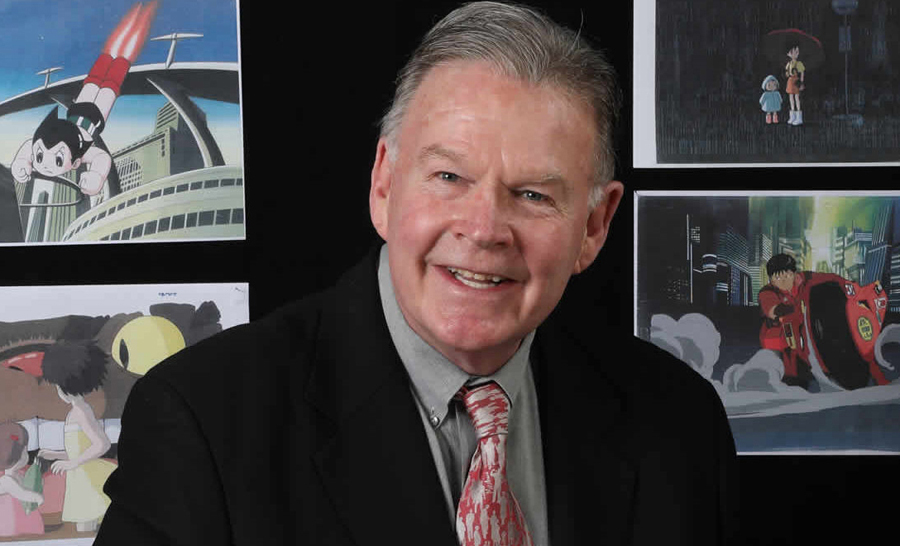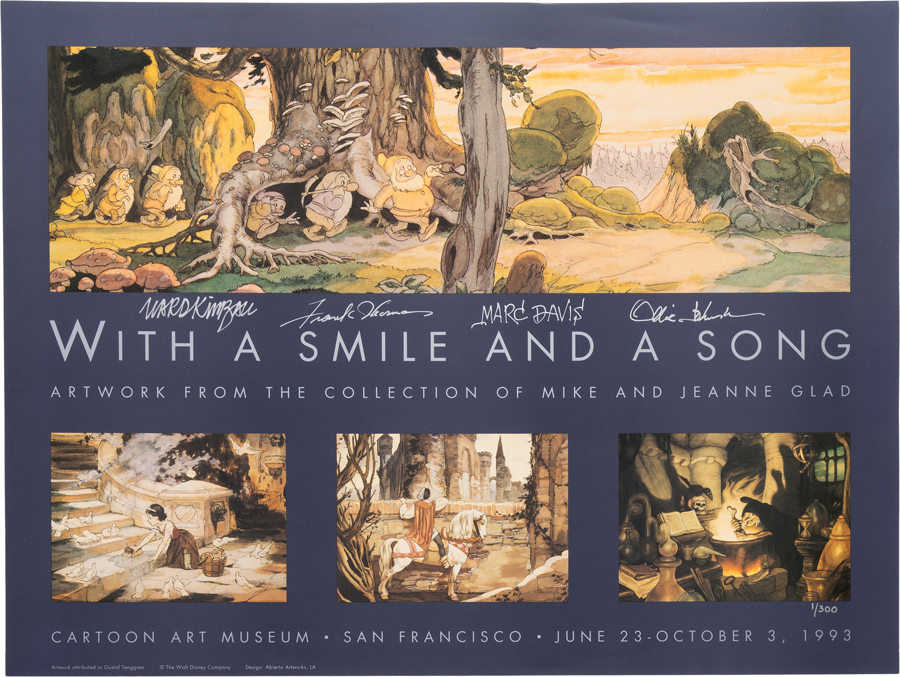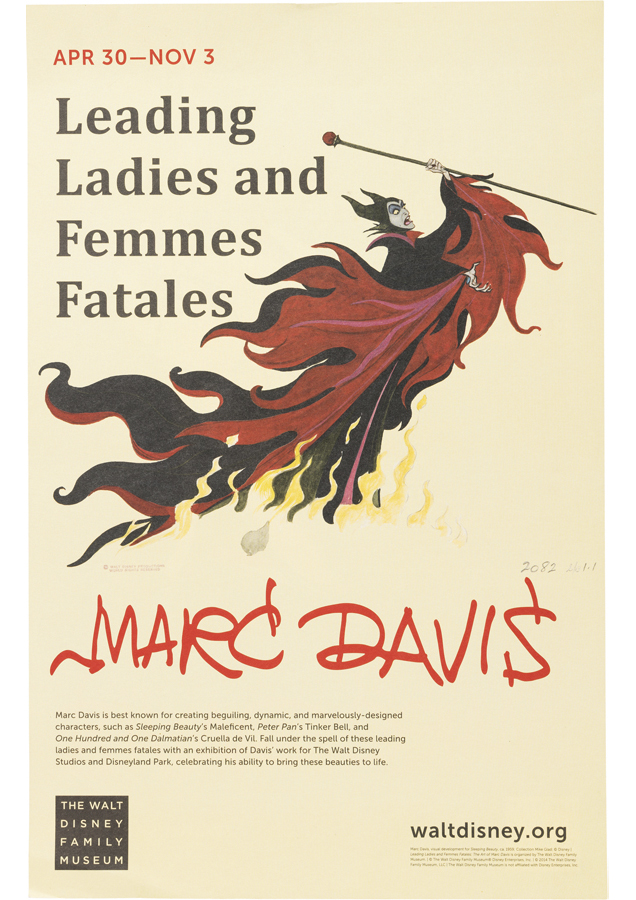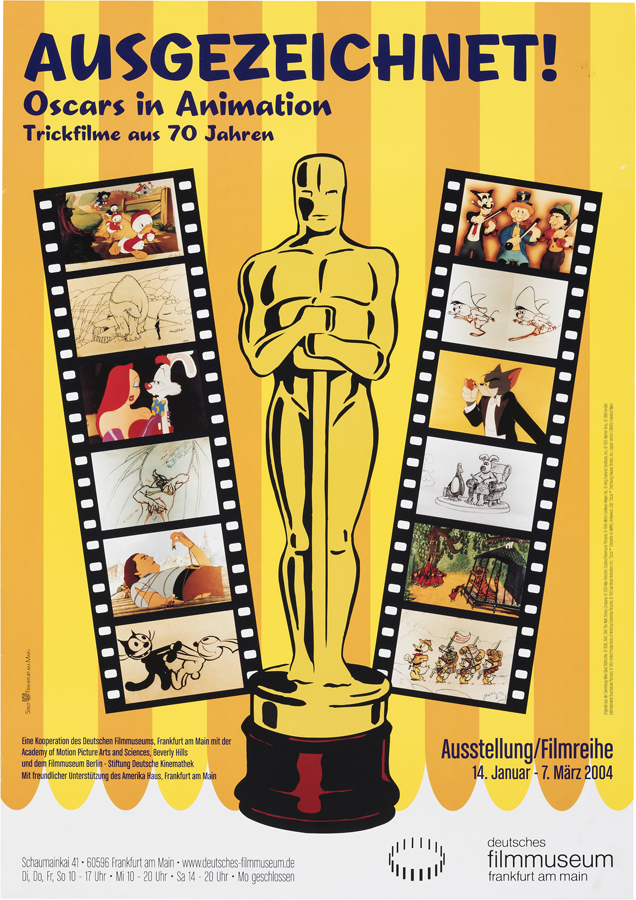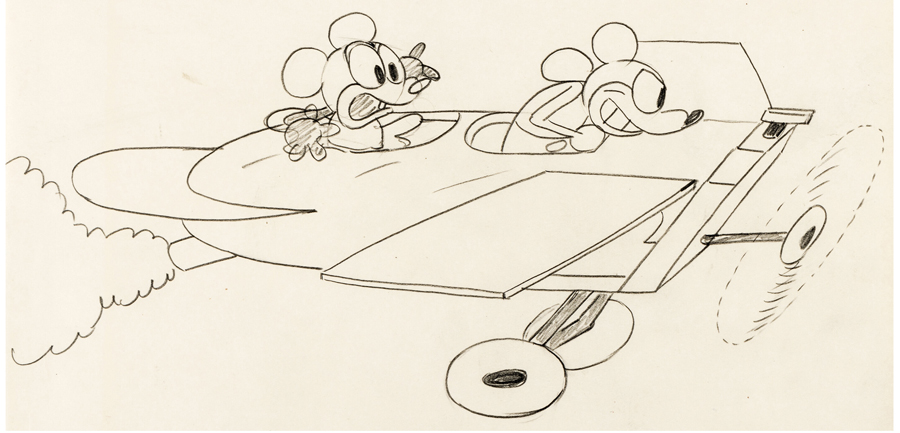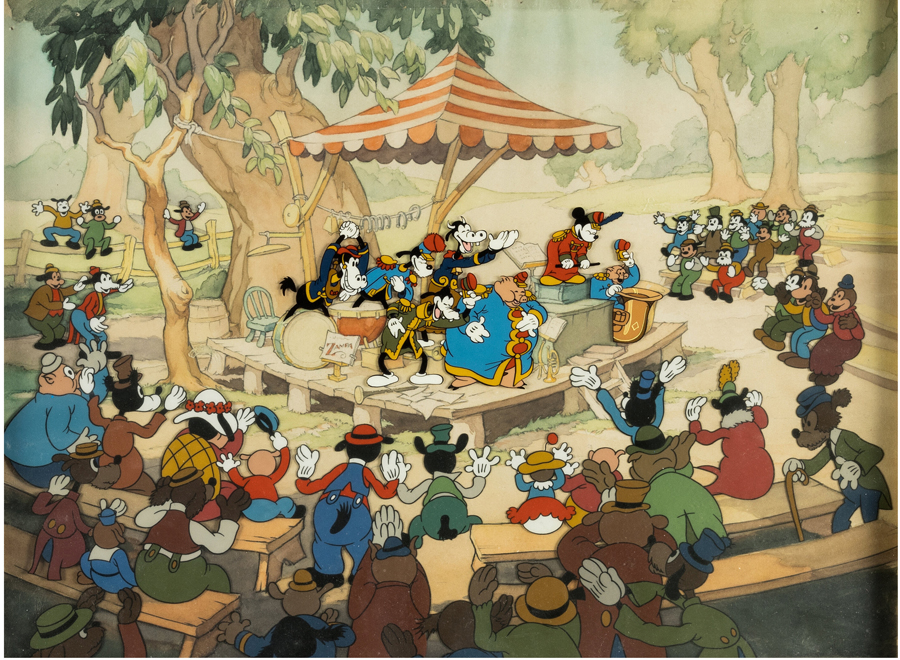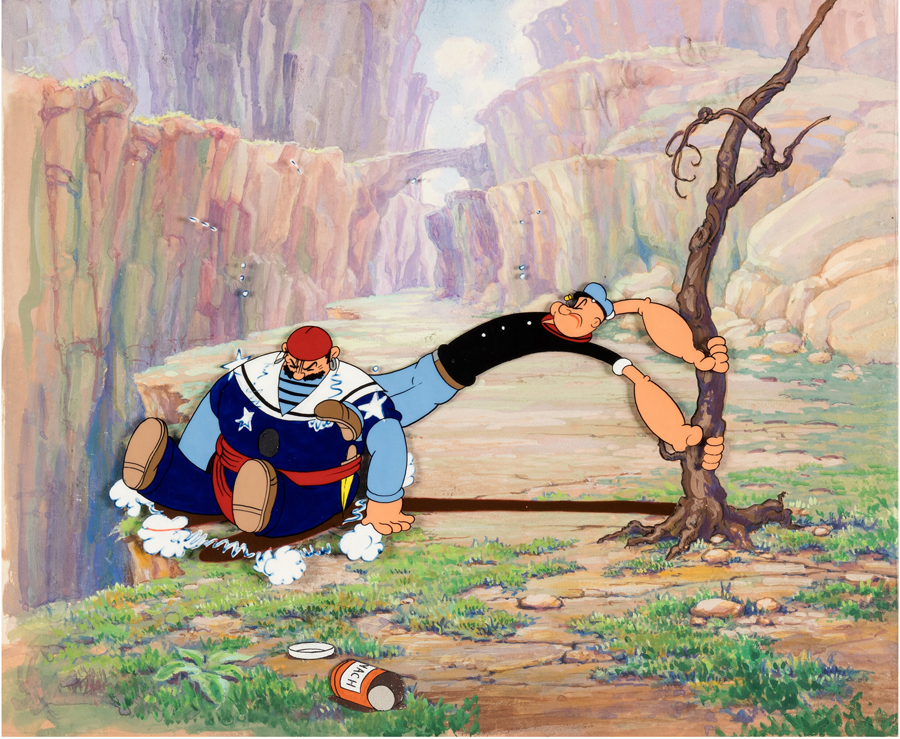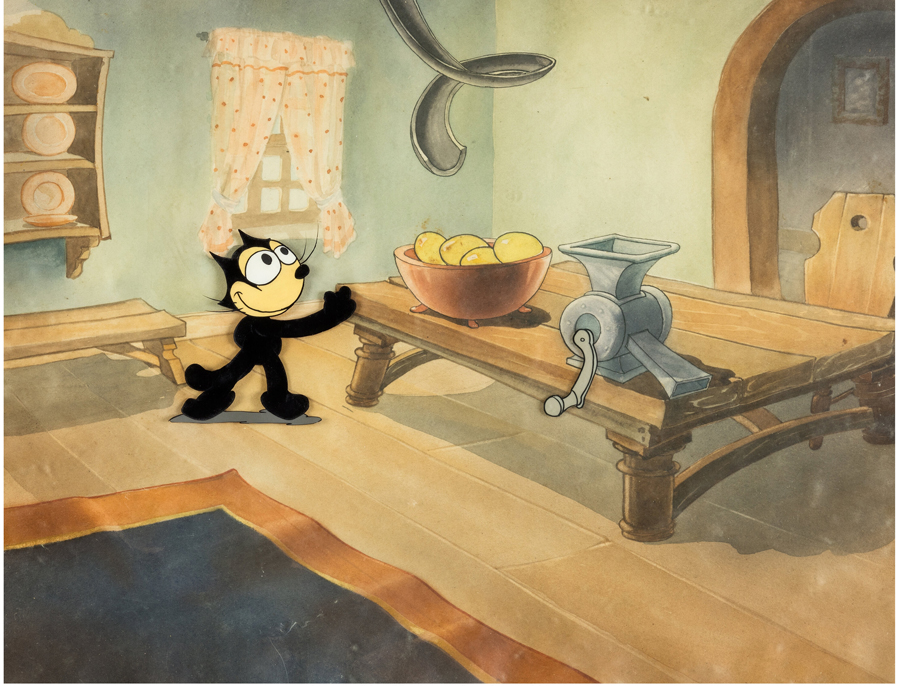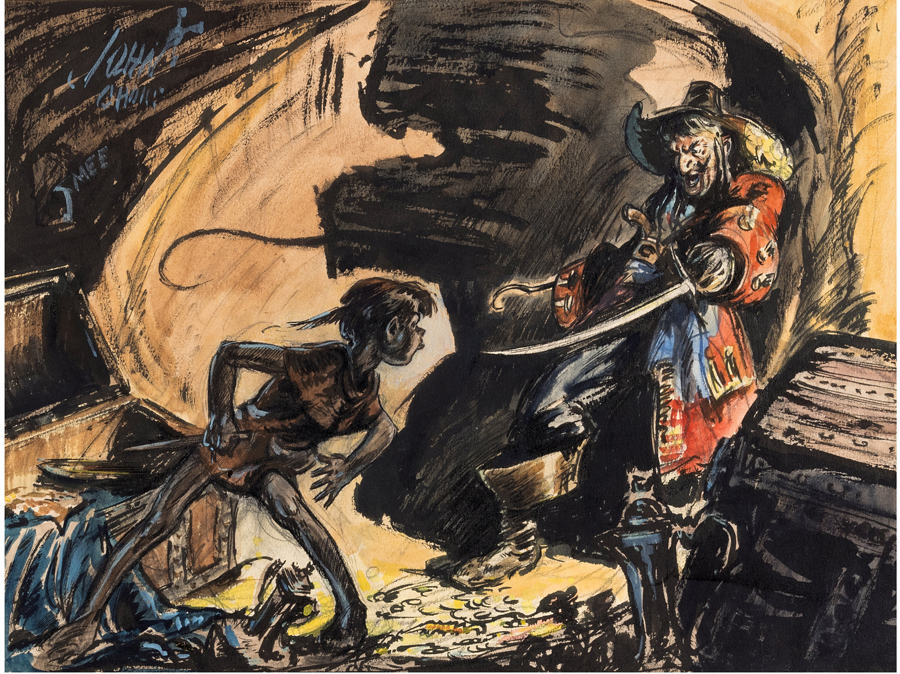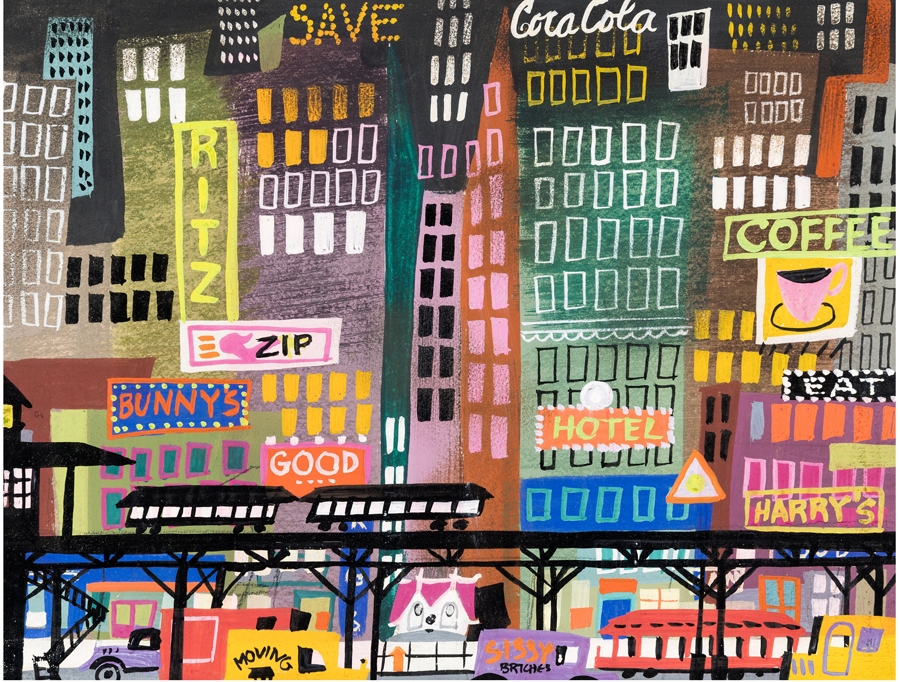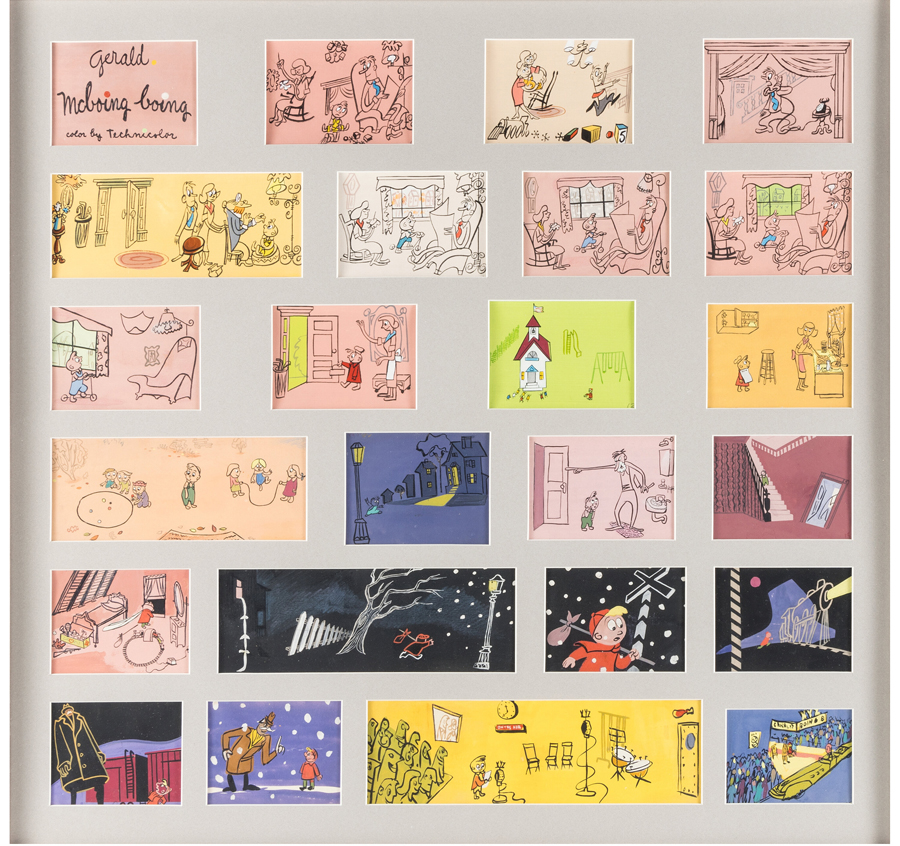FOR DECADES, THE FILM PRODUCER’S RENOWNED COLLECTION OF ORIGINAL ART HAS TRAVELED TO MUSEUMS ACROSS THE GLOBE. NOW HIS VAST ASSEMBLAGE IS ON ITS WAY TO AUCTION.
By Bill King
If you have ever viewed an animation art museum exhibit, there’s a very good chance it was one of Mike Glad’s. The Oscar-nominated film producer has been a fan and avid collector of animation art for decades, and his interests span the gamut from Disney to Ghibli and everything in between. Long before the animation art craze of the late 1980s and early ’90s, Glad was contacting the world’s great animators and collectors, including such animation heavyweights as Joe Grant, Maurice Noble, Paul Julian and Bill Hurtz, acquiring whatever they were willing to part with – often entire collections.
Mike Glad also collects original anime art, and in 2021, he offered pieces from his collection through Heritage Auctions. Portrait by Scott McCue.
In 1993, San Francisco’s Cartoon Art Museum displayed a portion of Glad’s collection in an exhibition dedicated to ‘Snow White and the Seven Dwarfs.’
He compiled vast assortments of original art from Disney, Warner Bros., MGM, Walter Lantz Productions, UPA and myriad other studios dating back to the dawn of the art form. And the dedicated collector didn’t stop there; he also amassed art from Japanese anime, as well as award-winning foreign films from around the globe. Ultimately, Glad and his wife, Jeanne, decided to share their love of animation art with others through museum exhibitions. The variety and enormity of the collection led to a dozen shows at venues ranging from the Walt Disney Family Museum and the Cartoon Art Museum to Seattle’s Museum of Flight and Germany’s Deutsches Filminstitut & Filmmuseum, just to name a few.
Glad’s collection has also made appearances at the Walt Disney Family Museum in San Francisco and the Deutsches Filminstitut & Filmmuseum in Frankfurt, Germany.
Next month, Heritage will offer art from these exhibits in its August 16-19 The History of Animation: The Glad Museum Collection Signature® Auction. Original pieces from virtually every studio will be featured, including some never-before-seen key master setups, production cels, hand-painted one-of-a-kind backgrounds and concept art from animation’s most iconic films and scenes. There are stunning setups and concept pieces from an array of Disney classics, including Fantasia, Lady and the Tramp, Mickey Mouse’s The Band Concert, Victory Through Air Power, Plane Crazy and even Disney’s Alice Comedies. There’s also remarkable vintage art from theatrical cartoons by Bray Productions, Winsor McCay, Looney Tunes, Walter Lantz, Columbia, MGM and nearly every other major and minor studio dating back to the start of the 20th century. Of special note, the auction will feature key master setups from Oscar-winning short films produced by the groundbreaking studio UPA, considered the most influential animation studio of the mid-20th century.
In celebration of Heritage’s momentous event, we asked Glad to pick some of his favorite pieces from the auction. Below, the collector takes us on a five-decade trip through some of animation art’s greatest moments.
Gertie the Dinosaur Animation Drawings (Winsor McKay, 1914)
“Very little preproduction or production art from the early animated films has survived. Yet from the seminal film Gertie the Dinosaur by the pioneering cartoon artist Winsor McCay, a few artistic treasures have been found. Robert Brotherton, another artist and McCay aficionado, should be thanked. He rescued Gertie production drawings, a few cels from another McCay film The Sinking of the Lusitania and the nitrate prints of the films. Any discussion about the history of animation must start with Gertie.”
Plane Crazy Animation Drawing (Walt Disney, 1929)
“In 1928 the Disney studio was in chaos. The majority of their animators and the rights to their character Oswald the Lucky Rabbit had been stolen by their producer Charles Mintz. However, the most talented animator, Ub Iwerks, remained. Iwerks storyboarded then animated the complete films Plane Crazy and Steamboat Willie, and Mickey Mouse, a cartoon with sound, was born. Any collection on the history of animation should have an early Iwerks Mickey.”
The Band Concert Cel and Background (Walt Disney, 1935)
“The William Tell overture plays loudly in any discussion of Mickey. In 1935 Disney released the first color short with Mickey as the director of an outdoor concert. Prior to this cartoon, all Mickey shorts were in black and white. This cel and background from Scene 1 marks the first moment Mickey appears in color on theater screens.”
Popeye the Sailor Meets Sinbad the Sailor Cel and Background (Fleischer Studios, 1936)
“In 1936, two years before the release of Snow White and the Seven Dwarfs, Fleischer Studios released a color two-reel cartoon that was 16 minutes long. Prior to this release, cartoon shorts were eight to 10 minutes in length. This cartoon was sold as a feature, and audiences loved it. For years I thought no production artwork had survived from the three Fleischer color Popeyes – the trash was filled when the studio moved from New York to Miami – but I was wrong. Animator Alden Getz kept several boxes of animation drawings, cels and backgrounds from those early years.”
Felix the Cat and The Goose That Laid the Golden Egg Cel Setup and Background (Van Beuren Studios, 1936)
“Prior to Steamboat Willie, Felix the Cat starred in more than 150 cartoons. In 1930 he was retired only to be resurrected in 1936 for three cartoons by Van Beuren Studios. In 1958 Felix was again resurrected for nearly 300 television episodes. This setup is thought to be the earliest surviving cel of Felix the Cat and one of two setups from Van Beuren Studios in existence. This setup was purchased at an auction in Australia, home of the cartoonist Pat Sullivan, the creator of Felix. Perhaps it was his setup.”
David Hall Painting for Peter Pan (Walt Disney, c. 1940s) and Mary Blair Gouache for The Little House (Walt Disney, 1952)
“Disney’s Character Model Department employed many great artists. Their role was to recommend both background and character design while fleshing out story. Two master artists from the 1940s and 1950s were David Hall and Mary Blair. Appropriately, Hall, the Brit, worked on Peter Pan and Alice in Wonderland, whereas Blair helped design most every short or feature. Walt Disney loved her work. The Blair painting for The Little House conveys the claustrophobic feeling of the Little House. The confrontation of Peter and Captain Hook is the pivotal moment of the film.”
Gerald McBoing-Boing Storyboard/Color Keys by Jules Engel and Herb Klynn (UPA, 1950)
“In the early 1940s a group of young animators wanted to experiment with artistic style used with cartoons. According to Jules Engel, ‘As artists we wanted the backgrounds to be flat and bold matching the design of the cels.’ Thus UPA was born. The studio’s first Oscar was awarded in 1950 for Gerald McBoing-Boing. For this Dr. Seuss story, when Gerald is sad, the backgrounds are dark, and when he is happy, the environment is bright. The color keys for the film were painted by Engel and Herb Klynn. They illustrate the film’s flow and how the emotional content can be enhanced by the environment.”
 BILL KING is Director of Animation Art and Anime at Heritage Auctions. He can be reached at 214.409.1602 or BKing@HA.com.
BILL KING is Director of Animation Art and Anime at Heritage Auctions. He can be reached at 214.409.1602 or BKing@HA.com.

